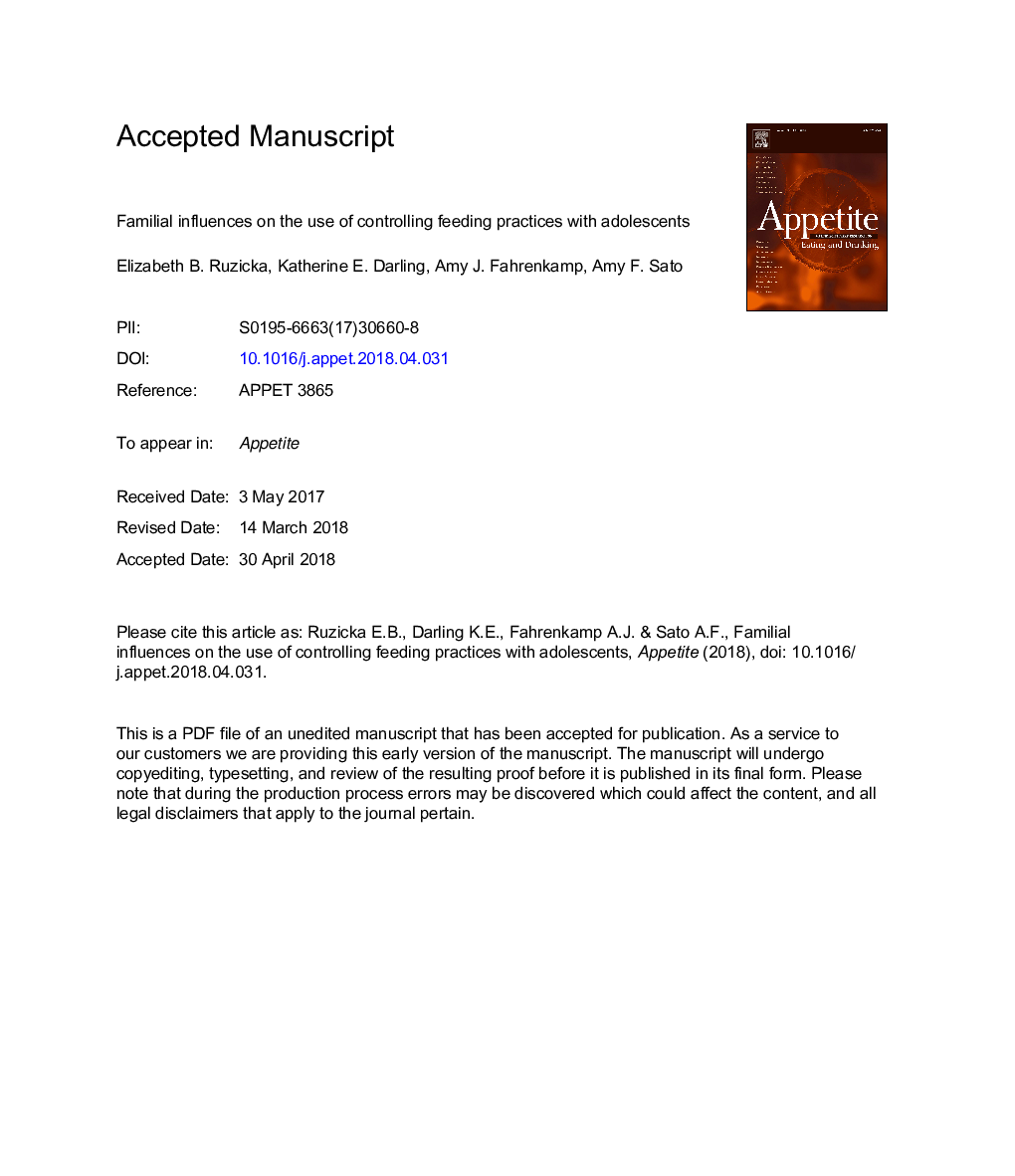| Article ID | Journal | Published Year | Pages | File Type |
|---|---|---|---|---|
| 7305502 | Appetite | 2018 | 36 Pages |
Abstract
Little is known about what factors influence a caregiver to use controlling feeding practices with adolescents. The present study examines potential predictors (e.g., parent and child eating, parent and child weight, and the home environment) of the use of controlling feeding practices among adolescents, an age group that has not received much attention. Parents (Nâ¯=â¯54, M ageâ¯=â¯43.63 years, SDâ¯=â¯6.42; 94.4% female) of adolescents ages 12-17 (Nâ¯=â¯54, M ageâ¯=â¯13.94 years, SDâ¯=â¯1.75; 43.6% female) completed measures assessing their child feeding practices, eating patterns and the home environment. Adolescents completed measures of their eating patterns. Regression analyses were used to determine the most salient predictors of controlling child feeding practices, specifically restriction of food intake and pressure to eat. After controlling for adolescent age, parental dietary restraint was significantly associated with restriction and accounted for 15.2% of the variance in the use of restriction, F (1, 51)â¯=â¯10.4, p<.01. Adolescent emotional eating and income-to-needs ratio were significantly associated with use of pressure above and beyond adolescent age and accounted for 29.1% of the variance in the use of pressure, F (2, 48)â¯=â¯10.2, p<.001. This study suggests that future research should include factors from different levels of influence, such as child, parent and home environment. As understanding of these influences grows, efforts can be made to target specific contributors within intervention settings to address potential adverse outcomes associated with controlling feeding practices.
Related Topics
Life Sciences
Agricultural and Biological Sciences
Food Science
Authors
Elizabeth B. Ruzicka, Katherine E. Darling, Amy J. Fahrenkamp, Amy F. Sato,
